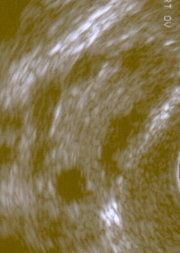(Australia-Australian Family Physician, May 1999, p. 447.) The most common presenting symptoms of hyperandrogenism in women are hirsutism, acne and alopecia. In more serious cases, changes in the voice and enlargement of the genitalia may occur. Hyperandrogenism is often the result of idiopathic hirsutism, or polycystic ovary syndrome followed by late-onset congenital adrenal hyperplasia, hyperprolactinemia, Cushing's syndrome and androgen- secreting tumors. Androgen excess may also occur as part of hypothyroidism, porphyria and anorexia nervosa. The diagnostic investigation of each woman should be based on the most probable etiology determined from the history and a complete physical examination. In addition to identifying and treating the primary pathology (if possible), patients should be assisted with weight control, managing excess hair growth and dealing with the psychologic and social issues of hyperandrogenism. Acne, hirsutism and alopecia may respond to spironolactone or antiandrogens such as cyproterone acetate. Other therapies include oral contraceptive pills to suppress androgen production by the ovaries and metformin to increase the insulin sensitivity that is common in polycystic ovary syndrome.
COPYRIGHT 1999 American Academy of Family Physicians
COPYRIGHT 2000 Gale Group



